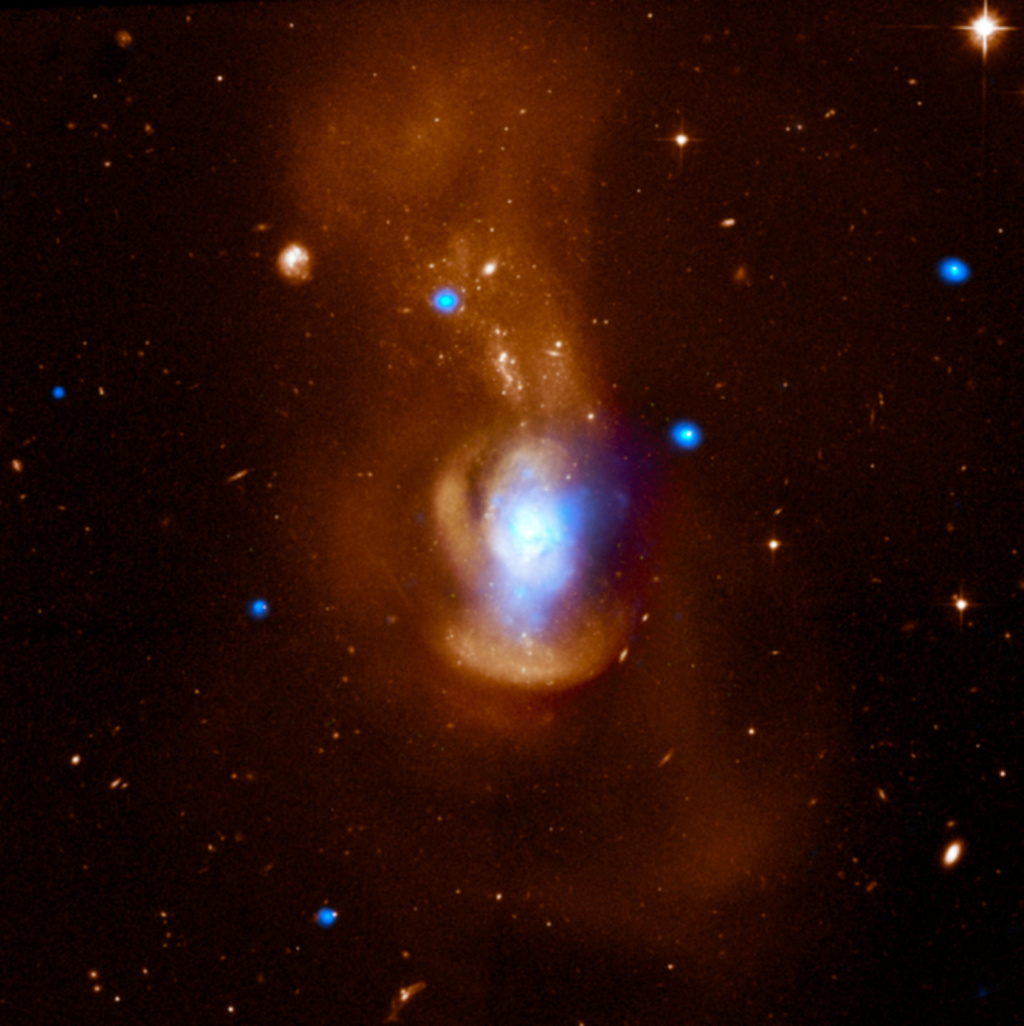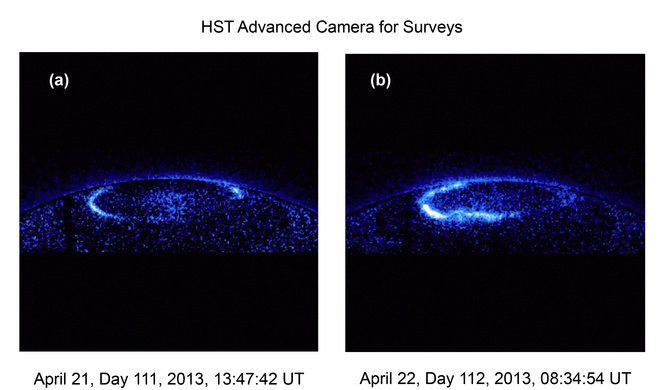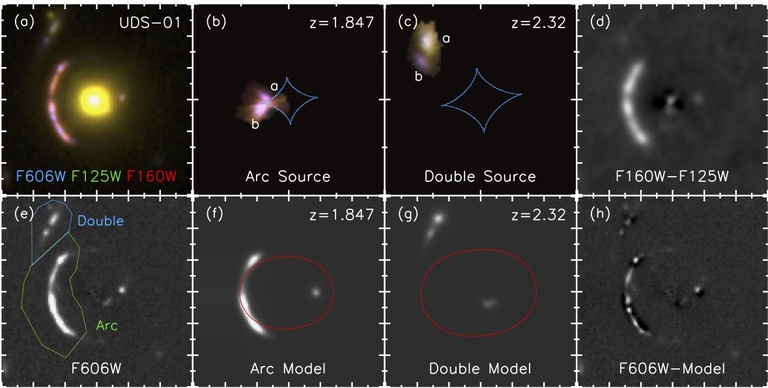This month marks the Hubble Space Telescope's 25th anniversary, and the University of Iowa asked its physics and astronomy faculty and staff for some of their favorite photos from the timeline of this technological marvel.
Here’s what they shared:

Galaxies form stars. Some of those stars end their “normal” lives by collapsing into black holes, but then begin new lives as powerful X-ray emitters powered by gas sucked off a companion star.
I obtained this Hubble image (in red) of the Medusa galaxy to better understand the relation between black hole X-ray binaries and star formation. The striking appearance of the Medusa arises because it’s a collision between two galaxies – the “hair” is remnants of one galaxy torn apart by the gravity of the other. The blue in the image shows X-rays, imaged with the Chandra X-ray Observatory. The blue dots are black hole binaries.
Earlier work had suggested that the number of X-ray binaries is simply proportional to the rate at which the host galaxy forms stars. These images of the Medusa allowed us to show that the same relation holds, even in the midst of galactic collisions.
— Phil Kaaret, professor, Physics and Astronomy

This pair of images shows a spectacular ultraviolet aurora light show occurring near Saturn’s north pole in 2013. The two images were taken just 18 hours apart, but show changes in the brightness and shape of the auroras. We used these images to better understand how much of an impact the solar wind has on the auroras.
We used Hubble photographs like these acquired by my astronomer colleagues to monitor the auroras while using the Cassini spacecraft, in orbit around Saturn, to observe radio emissions associated with the lights. We were able to determine that the brightness of the auroras is correlated with higher radio intensities.
Therefore, I can use Cassini’s continuous radio observations to tell me whether or not the auroras are active, even if we don’t always have images to look at. This was a large effort including many Cassini investigators and Earth-based astronomers.
— William Kurth, research scientist, Physics and Astronomy

The pink colored arc shows the image of a distant galaxy as seen 10 billion years ago, when the universe was only 3 billion years old. The signal has been greatly magnified by a powerful cosmic telescope (known as gravitational lenses) from a massive cluster of galaxies in the foreground. The yellowish blob at the center of the image is one of the member galaxies in the foreground cluster. This image has allowed us to study detailed properties of a compact metal-poor galaxy that is experiencing a burst of star formation. The rest of the panels show how we studied this system by modeling the optics of the cosmic telescope.
— Hai Fu, assistant professor, Physics and Astronomy